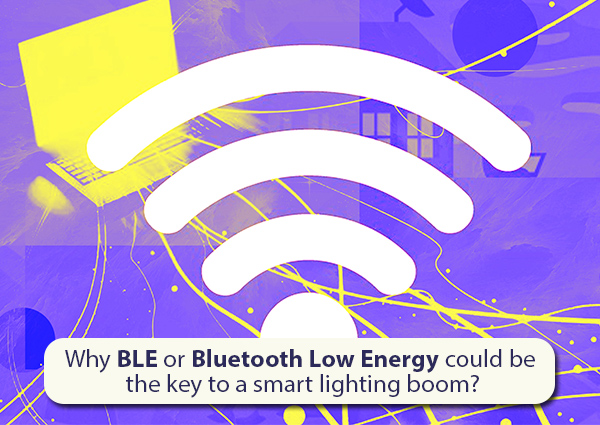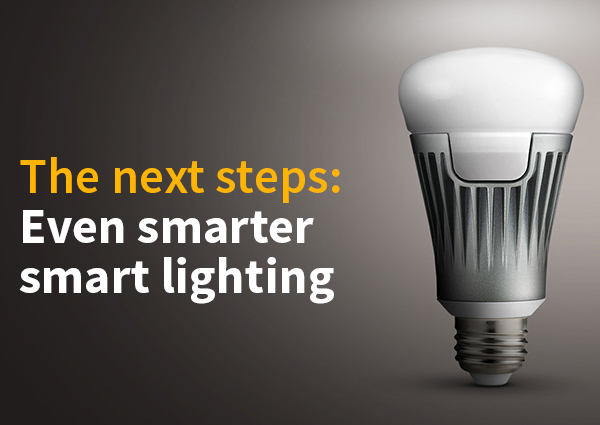Why Bluetooth Low Energy could be the key to a Smart lighting Boom

In the following article, we will be discussing why Bluetooth Low Energy could be the key to a smart lighting boom: Bluetooth Low Energy (BLE) is nothing but a protocol optimized for controlling smart lighting. It overcomes the drawbacks of communication protocols such as Wi-Fi and ZigBee and can be combined or merged with other technologies to make smart lighting even smarter.
There has been lots of talk about the benefits or advantages of smart lighting, not least how it can save energy and make our homes, hospitals, workplaces and other buildings are more comfortable and pleasant. But actual or authentic smart lighting implementations remain relatively uncommon, partly because of the wireless technologies that have normally been used.
If smart lighting is to be intuitive and convenient, it must be controlled wirelessly via a mobile device, such as a smartphone, wearable or tablet. The trouble is, the wireless technologies that have been trained in smart lighting, including ZigBee and Wi-Fi, have drawbacks that hinder usage and adoption of these systems.
Why Wi-Fi and Zig Bee aren’t Ideal for Smart Lighting
For a start, you won’t find ZigBee in most tablets and phones, meaning you’ll need an additional gateway or dongle between your control device and the lights. Also increasing the overall system cost, there’s the risk or danger involved in having a single gateway to your system: if it fails, you may not have another way in.
On the other hand, Wi-Fi is found in a most mobile kit but only connects the device to a Wi-Fi router. From there, you need another form of connection, like ZigBee, to communicate to your lights. Once more, this means there is at least one single point of failure.
The other drawback of both ZigBee and Wi-Fi is their susceptibility to interference. Wi-Fi operates or works on the Direct Sequence Spread Spectrum (DSSS), and doesn’t change hop or frequency. Instead, it centres on one channel which is 22 MHz wide. This 83 MHz-wide band has space for only three non-overlapping channels and for 11 overlapping ones. Therefore, you’re limited to having three Wi-Fi networks in close proximity. ZigBee, on the other hand, splits the band into 16 channels, which means for every Wi-Fi channel, you get four overlapping ZigBee ones. ZigBee also uses DSSS, which means that a Wi-Fi network using the same channel as a ZigBee one will likely interfere.
1. Bluetooth Low Energy Addresses the Issues

Bluetooth Low Energy (Bluetooth Smart, or BLE) is a more present-day or recent innovation, created for the Internet of Things. Its first big selling point is that you’ll find it in virtually every tablet and smartphone made in recent years and it’s the only low-power radio technology that can brag about this. You can therefore control and set up a BLE smart lighting system directly, using most existing devices. This makes BLE-controlled systems cost-effective and simpler to deploy and run. Moreover, you don’t need the dongle or gateway that Wi-Fi or ZigBee controlled systems require, meaning you remove these single points of failure. Also as BLE uses Frequency Hopping Spread Spectrum (FHSS) modulation it is less prone to interference.
2. Smart lighting and Beacons
![]()
Bluetooth Low Energy or BLE-control supports smart lighting features that wouldn’t be possible with ZigBee or Wi-Fi. Beacon technology is a pretty good example: this detects when a BLE device leaves or enters the area around the beacon. Build or construct a beacon transmitter into a luminaire and you can create proximity-sensitive smart lighting: Automatically create lighting that follows a person as they move through a building, or, activate a pre-set scene when someone enters a room, for example.
Fit can work in many other ways, too: imagine a light over a museum display or a shop, with a beacon built-in. As someone walks up to it, the beacon could trigger the retailer’s/museum’s app on the visitor’s smartphone to show or display information about the exhibit.
3. The Next steps: Even smarter Smart lighting

Next-generation lighting control systems now enable or allows you to collect data from sensors in luminaires and send this to the cloud for analysis. Analyzing this data can yield or provide a range of insights, which can be used to make your smart lighting respond to factors such as ambient light, CO2 levels or humidity. You can also use the data to count log events, people, help manage crowds or deliver marketing messaging at the right time.
Conclusion

Bluetooth Low Energy or BLE has the potential to make smart lighting control to levels that alternative wireless communication technologies have so far been unable to. Because so many people own smartphones, tablets and smartwatches provide built-in BLE, you remove the need for a dedicated or resolute gateway to control the lights, thereby reducing complexity and taking out single points of failure. Furthermore, BLE offers system and lighting designers exciting opportunities to offer new features, by incorporating additional technologies, like beacons, into their products.

